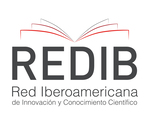Applicability of Andean sanitary standards in the trade of terrestrial animals and their products, in relation to diseases exotic to the subregion. Period 2010 - 2017
DOI:
https://doi.org/10.20453/stv.v9i2.4106Abstract
The purpose of the study was to evaluate the applicability of the Andean health standards related to exotic diseases of importance in the Andean subregion in the trade of animals and their products. From the analysis was quantified that the largest volume of imports was poultry, pigs and cattle, similar to Europe with commercial movements of live animals. The Andean regulations had variable coverage. From the imports of animals and their products made by the Member Countries of the Andean Community (Bolivia, Colombia, Ecuador and Peru), the main countries which reported exotic diseases were Belgium, China, United States of America, Canada, Chile and Italy; and the customs risk tariff were identified with a total for cattle of 15 goods, equids 2 goods, sheep-goats 6 goods, pigs 6 goods and birds 15 goods. The study showed 100% compliance with the Andean standards for bees, lagomorphs, and their products, 62.5% for cattle, 59.5% for birds, 80.6% for sheep - goats, 76.9% for pigs, and 50% for equids. This implies that risk products were imported and the Member Countries did not comply with regulations; leaving open the possibility of entry of exotic agents. The results suggested that the Member Countries and the General Secretariat of the Andean Community should establish a review and adjustments of requirements related to exotic diseases and customs tariffs, to ensure that Andean regulation are observed, in safeguarding public and animal health of the subregion.
Downloads
Downloads
Published
How to Cite
Issue
Section
License
All articles published in Salud y Tecnología Veterinaria are under a Creative Commons Reconocimiento 4.0 International license.
The authors retain the copyright and grant the journal the right of first publication, with the work registered with the Creative Commons License, which allows third parties to use what is published whenever they mention the authorship of the work, and to the first publication in this magazine.
Authors can make other independent and additional contractual agreements for the non-exclusive distribution of the version published in this journal, provided they clearly indicate that the work was published in this journal.
The authors can file in the repository of their institution:
The research work or thesis of degree from which the published article derives.
The pre-print version: the version prior to peer review.
The Post-print version: final version after peer review.
The definitive version or final version created by the publisher for publication.












